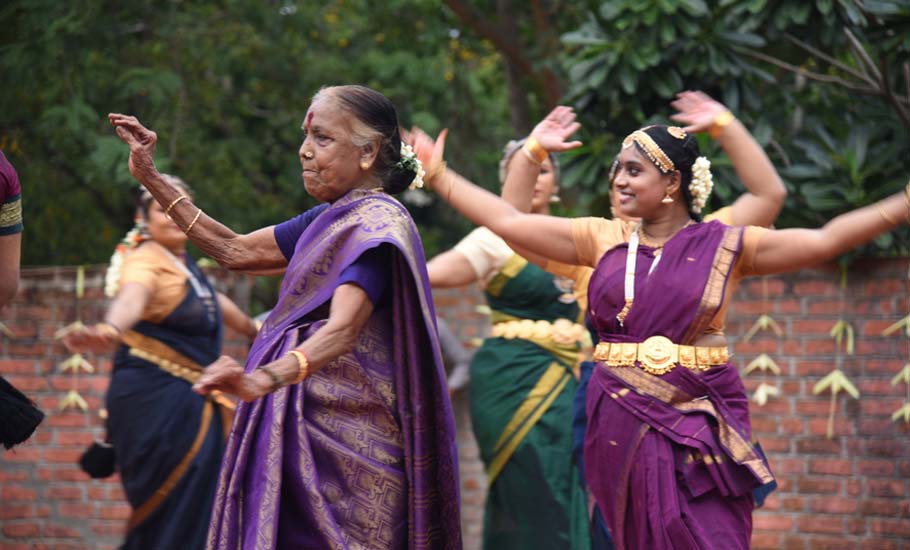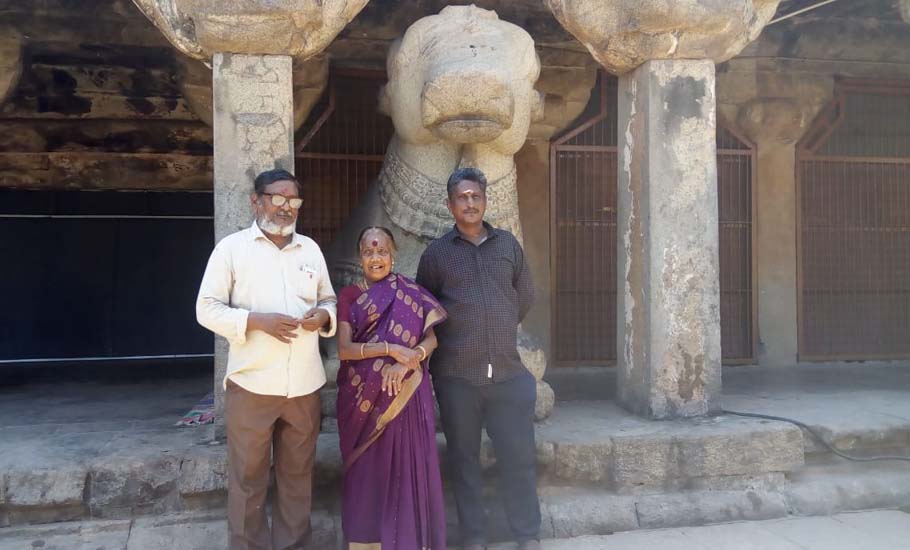
- Home
- India
- World
- Premium
- THE FEDERAL SPECIAL
- Analysis
- States
- Perspective
- Videos
- Sports
- Education
- Entertainment
- Elections
- Features
- Health
- Business
- Series
- In memoriam: Sheikh Mujibur Rahman
- Bishnoi's Men
- NEET TANGLE
- Economy Series
- Earth Day
- Kashmir’s Frozen Turbulence
- India@75
- The legend of Ramjanmabhoomi
- Liberalisation@30
- How to tame a dragon
- Celebrating biodiversity
- Farm Matters
- 50 days of solitude
- Bringing Migrants Home
- Budget 2020
- Jharkhand Votes
- The Federal Investigates
- The Federal Impact
- Vanishing Sand
- Gandhi @ 150
- Andhra Today
- Field report
- Operation Gulmarg
- Pandemic @1 Mn in India
- The Federal Year-End
- The Zero Year
- Science
- Brand studio
- Newsletter
- Elections 2024
- Events
- Home
- IndiaIndia
- World
- Analysis
- StatesStates
- PerspectivePerspective
- VideosVideos
- Sports
- Education
- Entertainment
- ElectionsElections
- Features
- Health
- BusinessBusiness
- Premium
- Loading...
Premium - Events

How R Muthukannammal, the last devadasi, kept a dying art form alive

When R Muthukannammal was seven years old, she was given a mangalsutra (thaali) with beads tied in a yellow thread. The priest asked her to place it on the feet of the god for some time and then tie it around her neck. The ceremony was over, and she became a devadasi (devaradiyaar), a woman dedicated to the temples to serve the gods. A sumptuous feast followed. Muthukannammal, the...
When R Muthukannammal was seven years old, she was given a mangalsutra (thaali) with beads tied in a yellow thread. The priest asked her to place it on the feet of the god for some time and then tie it around her neck. The ceremony was over, and she became a devadasi (devaradiyaar), a woman dedicated to the temples to serve the gods. A sumptuous feast followed. Muthukannammal, the last devadasi-Sadir dancer from Viralimalai, still wears that mangalsutra, a symbol of her unending love for the god.
Muthukannammal was expecting a Kalaimamani award from the Tamil Nadu state government but the central government awarded her the highest civilian award, Padma Shri, a week ago. After a week of busy media interviews and visits of officials, the 84-year-old is back to her room where old photographs of more than seven decades of her association with Sadir—a precolonial dance once performed in temples and special royal courts in Tamil Nadu—hung from the wall.
“I don’t know how to express my feelings. It (Padma Shri) is a big award. I don’t know how to write so I can express my gratitude only through Sadir, the medium that is close to my heart,” says Muthukannammal, who was under the impression that the Kalaimamani award was the biggest in the world. “I never knew the importance of Padma Shri. It was after I was informed that I was chosen for it that I learnt from my grandchildren that it is the highest civilian award in the country,” she says.
Muthukannammal was born in Viralimalai, a remote village in Pudukkottai, in 1937. She had been a devaradiyaar trained in Sadir since the age of seven, under her famous nattuvannar father Ramachandran and grandmother. Muthukannammal and her family were closely associated with temple dance practices in the Muruga temple as well as in Pudukkottai Shiva temple.

Rajagopala Thoondaiman (1928-1948), the last king of the Pudukkottai princely state, had gifted lands to the families of devadasis for their services to the god. Muthukannammal is the seventh generation of the devadasi tradition and the only surviving dancer of the 32 contemporaries at the Muruga temple in Viralimalai.
Today, many dancers visit Viralimalai and spend time with Muthukannammal. They even shoot videos and write about their experiences with the senior Sadir dancer. However, things were different two decades ago. In 2000, rock art expert and artist KT Gandhirajan visited the Murugan temple in Viralimalai where he heard about the devadasi tradition practised in the temple decades before India got independence. When he showed interest in meeting a devadasi, a friend took him to the house of Marikannmmal, another devadasi-Sadir dancer in the village. She told Gandhirajan that she learnt Sadir from Ramachandra Nattuvanar, who was the father of Muthukannammal.
Gandhirajan, who was doing his PhD then, was new to Sadir as an art form so he returned. After six months, he revisited Viralimalai with his friend and Tamil writer Konangi. They first went to the house of Marikannmmal. After listening to her for a while, Konangi prostrated before Marikannmmal.
“Konangi’s love and affection towards Sadir as well as Marikannammal was something new to me. It was this incident which led me deep into the world of Sadir and Muthukannammal later,” says Gandhirajan. Both Konangi and Gandhirajan took Marikannammal and Muthukannammal in and around the temple. Marikannammal died after two years.
Gandhirajan had brought many scholars from Chennai as well as other parts of the country to the house of Muthukannammal. “The scholars and dancers would come, interview her and leave. It neither helped Muthukannammal nor the art form. While scholars from outside Tamil Nadu were curious to know more about Sadir, those in the state never showed any interest,” he says.
Years passed by and in 2017, theatre artist Dharanidharan’s Udalveli Arts Foundation in Coimbatore organised a workshop on Sadir by Muthukannammal. The event evoked tremendous response. In 2018, Muthukannammal was chosen for the DakshinaChitra Viruthu, an annual award instituted by the Madras Craft Foundation and the Friends of DakshinaChitra to honour the folk performing artists and groups in recognition of their outstanding contribution to the field.
She came to Chennai and performed at the award function. “She spent a lot of time with us, discussing her temple days as a devadasi and the difficult times that she faced after the ban on the devadasi system in temples in 1947. She performed Sadir and we all became part of it. She was so humble,” recollects Gita Hudson, artist and coordinator of DakshinaChitra Museum.
To create awareness among people about the contributions of Muthukannammal, veteran sculptor G Chandrasekaran (fondly called Chandru) made a sculpture of Muthukannammal at his art school for the disabled in Tirunelveli. The sculpture in clay symbolised the challenges of an artist in keeping alive a dance form under odd circumstances.
After receiving the DakshinaChitra Virudhu, S Shanmughanathan of the Film Division of India, made a documentary on Muthukannammal in 2019. Titled Devaradiyaar in Sadir: The life and art of Muthukannammal, the film revolves around the life and art of Muthukannammal and how she works hard to keep her tradition of Sadir dance alive. The one-hour-long documentary introduced Muthukannammal and her art form to the outside world. “Every day, I would visit her house, and our conversation would last till the evening. We took her to the Murugan temple and she narrated her story as a young devaradiyaar in the temple. I spent almost a year researching for this documentary,” says Shanmughanathan, who is editor with the Film Division.
Muthukannammal doesn’t know how many times in a single day she had climbed the hundreds of steps of the Murugan temple in Viralimalai. For her, it was her duty to serve god. As a devadasi, Muthukannammal had a problematic beginning. In 1947, when she was 10 years old, the devadasi system was abolished. There were no takers for Sadir. Muthukannammal had a tough time, but she kept the art form alive by using her body as a tool. To add to the problem, the king of Pudukkottai princely state in British India, Rajagopala Tondaiman, lost power when the princely state joined the government of India in 1948. “I was 10 when we were banned in the temples. It was disappointing. The king of Pudukkottai, who used to sponsor us, also lost his power. No one called us to perform Sadir in the temples. Life has been miserable since then,” says Muthukannammal. To overcome the difficulties, the families of davaradiyaars sold the paddy and farmlands one after the other.
Lack of sponsorship and the popularity of Bharatanatyam brought in stumbling blocks to the life of many devadasi-Sadir artists. “Many stopped dancing Sadir and started learning Bharatanatyam. The popularity of the dance form was high. But I never wanted to leave Sadir because it is my soul,” she says. Even though devadasis are not supposed to get married, Muthukannammal had a companion. “Taking care of my three children was difficult. But I worked hard. Sadir as an art form gave me confidence and I still keep it as my source of energy,” she says.

“Eighty-four-year-old Sadir dancer from Viralimalai, Tamil Nadu, R Muthukannammal has performed in over 1,000 dance and singing shows over the last 70 years. She has been awarded the Padma Shri in the field of art,” wrote the Ministry of Home Affairs, Government of India, on its Facebook page on January 27.
True, but she also possesses an oral tradition of Sadir songs that she inherited. The characteristic style of Sadir is that the performer danced and sang at the same time. “I don’t know how to write. I don’t maintain any record of the Sadir songs. But I still have a good memory. My memory is my record,” she says. Muthukannmal can sing the Sadir songs in praise of the Thanjavur Brihadeeswara, the Pudukkottai king, the Naicker kings or the Maratha kings who ruled Thanjavur. “I have recorded some 20 songs while shooting the documentary. She can sing in Marathi, Tamil, Telugu, Kannada and Sanskrit. We don’t have a proper documentation of these songs,” says Shanmughanathan.
Gandhirajan says it is high time the state government documented the Sadir songs. “Many dancers have documented some songs from Muthukannammal. But there are more to be documented. They all should be brought into a single file so that it will be useful for everyone,” he says.
Muthukannammal says she is ready to teach Sadir to anyone who is interested. “I am happy for all the recognition that I have received so far for my art. My only worry is who will continue this after me. But there will be some other way. Let god decide,” she says, running her hand over her mangalsutra.
“I am a servant of the god. I will always remain one,” she adds.
